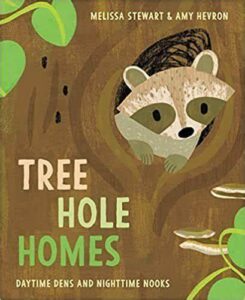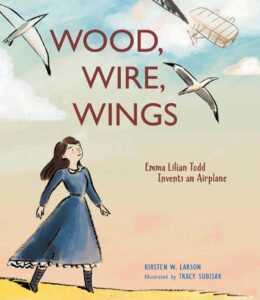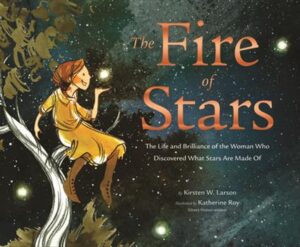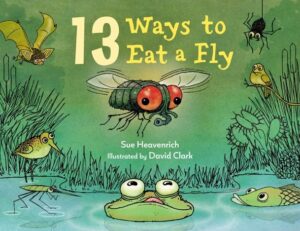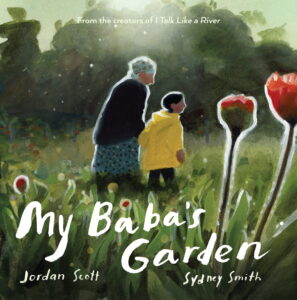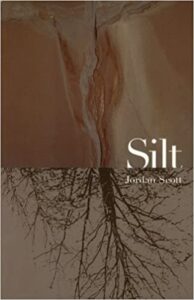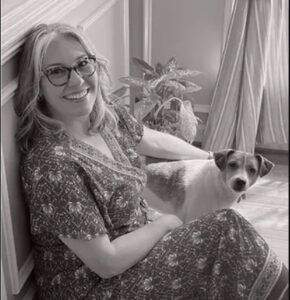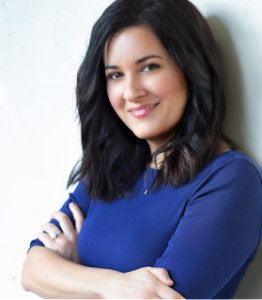 Help me welcome this month’s Industry Insider guest, Jennifer Rofé, a senior agent at Andrea Brown Literary Agency! Welcome, welcome, welcome!!!
Help me welcome this month’s Industry Insider guest, Jennifer Rofé, a senior agent at Andrea Brown Literary Agency! Welcome, welcome, welcome!!!
As much as I truly enjoy creating snarky biographical introductions for OPB guests, when I see something great that someone else created, I must acknowledge it. Given that, here’s Jennifer’s fantabulous Twitter bio.
“Children’s lit agent with @AndreaBrownLit who dreams about being a bakery-owning cowgirl. Never mind that I don’t bake or have a horse. (she/her)”
Wow, right? [Making a note to improve my own social media bios in light of seeing this one!]
And since it’s been a few months since we’ve done a Fun Facts section and I miss their pithy biographical goodness, we’re going to finish this introduction with a “7 Fun Facts about Jennifer” list. Here goes!
- My first job was writing for a wine trade magazine, and they hired me because I knew nothing about wine. I didn’t even know what Merlot was.
- My favorite color is yellow.
- My favorite band is, and always has been, and always will be, the Indigo Girls.
- My comfort meal is white rice with a fried egg and plátanos.
- Things I love? “Troublemakers,” sass, underdogs, talking animals, and magic.
- I am good at dream interpretation.
- I love hidden passages and secret rooms. One day, I will have a house with both.
Thanks so much for that, Jennifer. Now let’s all zip ahead to the interview and uncover a bit more of the elusive recipe for how a literary agent superstar is made!
RVC: Whenever I have a name question, I now ask it aloud instead of quietly wondering about it in silent semi-embarrassment. It’s a 2023 resolution of mine! So, here come two questions.
1) Do you prefer Jen or Jennifer?
Formally, like for work announcements, I go by Jennifer. But in life, I prefer Jen. So please call me Jen.
2) How do you say your last name?
JR: Row-fay. The accent on the e makes it a hard “a.”
RVC: Gotcha. Thanks for that! Now, you earned a BA in English with a minor in Social and Ethnic Relations from UC Davis. What was the intended career plan with that?
JR: Hahahahaha! I have no idea what the intended career plan was. As I was in line graduating college, I realized that I maybe should have studied Classics and Business. But it all worked out. Seems like it was a bit of a winding road, but in hindsight, I can see how I was getting here all along.
RVC: You worked as a middle grade teacher for five years. What was the best thing(s) about that time in your life?
JR: Those kids were the best. Except for one class that drove me to drink spiked hot tea in the bathtub!
RVC: Oh, I’ve been there, too.
JR: I always appreciated the kids who other teachers didn’t like.
- The “troublemaker” who was actually very intelligent. (I’m certain this kid is now either an entrepreneur or a criminal.)
- The kid who came from a family of underperforming students and so the same was expected of him, but he was very smart. (I helped this child get into a private high school.)
- The kid who brought a water squirter to school and stood behind a post to spray friends during the passing period. (On the inside, I was laughing, but I had to pretend to be mad.)
Being in middle school can be hard, but there’s something about that time that is a magical twilight.
RVC: What was your teaching superpower?
JR: I was good at bringing the low-performing students to level, and the principal started intentionally giving me those students. I loved working with those kids, and I really didn’t do anything different with them than I did with my more achieving students. I knew they could get it done and I treated them accordingly.
RVC: What convinced you to make the move from teaching to agenting?
JR: I long knew that I wanted to do something pertaining to children’s media. I thought maybe cartoons, but then I had a summer internship at Disney and it was miserable. Then I thought maybe educational publishing, so perhaps I should become a teacher first, which I did. I also always liked kidlit, and I would wander the bookstores perusing the children’s section, but working in traditional publishing never occurred to me.
Then one day, the office admin at the school where I was working asked what I was doing over the weekend, and I told her I’d probably go to Borders (a blast from the past!) at some point to look at books. She said I should go to Book Passage instead, which is a fantastic indie bookstore in the Bay Area, where I had been living at the time. When I got back to school Monday morning, she had put in my box the monthly newsletter from Book Passage. I noticed that they offered workshops, and there was an upcoming one on children’s literature. Lemony Snicket, Megan McDonald, and an editor from Chronicle were presenting. And so was Literary Agent Andrea Brown.
I remember thinking, What’s a literary agent?
I signed up for the conference–which was a lot of money for me at the time–just to find out what a literary agent is. On the last day of the conference, Andrea presented, and I thought, That’s what I’m going to do. I approached her after and asked how I get her job. And here I am.
RVC: Wow!
JR: That office admin has no idea how she changed my life.
RVC: Who was the first client you signed?
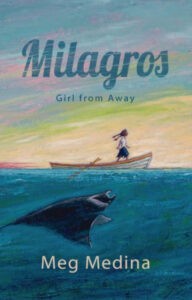 JR: The first client I signed on my own, in 2006, was Meg Medina, for her first book Milagros: The Girl from Away.
JR: The first client I signed on my own, in 2006, was Meg Medina, for her first book Milagros: The Girl from Away.
RVC: What was the tipping point with that book? What moved you to an “I’m taking it!” decision?
JR: The tipping point happened very quickly–on page 1. And that’s because even though Meg was writing about a fictional island, I could tell immediately that it was influenced by Cuba. My mom was born and raised in Cuba until her family fled the country, and I recognized Cuba from stories I had been told. In fact, if I recall correctly, I believe one of the first things I said to Meg when we spoke was, “You’re writing about Cuba, aren’t you?”
RVC: It’s clear that you’re deeply invested and interested in identity both from the projects you rep and how you represent yourself in the world.
JR: What most interests me about identity is how we’re perceived versus who we know ourselves to be or who we can become, and how that intersects. For instance, when Stranger Things came out, Joyce was my favorite character. She was perceived as a crazy, kooky lady, but she was right all along, and that nobody listened to her didn’t stop her from doing everything to save her son. Eventually, everybody got on board with Joyce.
In story, I am most interested in the character who is misunderstood, underestimated, overlooked. Even the students I appreciated the most when I was teaching were the ones who were underestimated.
RVC: What do you think is the most common misconception people have about the intersection of identity and writing?
JR: No identity is a monolith.
For instance, I’m half Cuban. Some would assume that I’m Catholic or that my mom’s family went to Miami after fleeing. Neither is true. We’re Cuban Jews, and my mom’s family ended up in Los Angeles.
The nuances of identity are infinite.
RVC: Let’s help writers by digging into industry specifics. Some agencies pass around queries/manuscripts. How often does that happen at ABLA (the cool acronym for the Andrea Brown Literary Agency)?
JR: Every day.
RVC: What’s something most people don’t know about ABLA?
JR: I don’t know if people really understand how collaborative we are. I talk with my colleagues every day, we help each other every day, and our hive-mind approach has made us a strong, dynamic agency.
RVC: If I asked your ABLA colleagues what your agenting superpower is, what might they say?
JR: My in-house nickname is Bonus Queen. I’m good at getting creative bonus language in contracts. And it’s so satisfying when those bonuses come through and clients earn additional money.
RVC: What’s your ACTUAL agenting superpower?
JR: When it comes to writers, I’d like to think I’m good at asking the questions that encourage them to pinpoint precisely what they’re trying to accomplish or say with a story. When it comes to illustrators, I’m good at spotting potential in the unexpected. For example, I came across the work of a fine artist whose style I thought would translate to picture books. And we very quickly landed her a picture book.
RVC: What trends is ABLA seeing in terms of picture book submissions?
JR: In terms of submissions we receive, we’re recently seeing texts about gardens, food, identity, and Christmas. There’s also been an uptick in stories that take place outside of a contemporary world–fantasy-esque, I guess you could say.
RVC: I have two words for you. Big + Sur.
JR: One of my favorite weekends of the year. ABLA runs the Big Sur Writers Workshops in Big Sur, CA, and Cape Cod, MA. Imagine being surrounded by fellow writers in clean, coastal air, workshopping your manuscript with small groups that are led by conference faculty, going away to revise for hours, strolling the redwoods or the sand to think, attending craft sessions from faculty, dining with colleagues. It’s a magical weekend.
RVC: What’s a success story that emerged out of Big Sur?
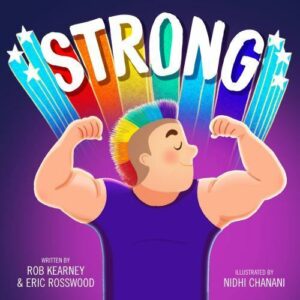 JR: We have several Big Sur success stories–writers or illustrators who have joined ABLA or who have found other agencies and have gone on to get published. Two current successes that come to mind are Eric Rosswood, whose picture book Strong recently won the Stonewall Honor, and Angela Joy, whose picture book Choosing Brave has earned an impressive list of accolades, including most recently a Caldecott Honor.
JR: We have several Big Sur success stories–writers or illustrators who have joined ABLA or who have found other agencies and have gone on to get published. Two current successes that come to mind are Eric Rosswood, whose picture book Strong recently won the Stonewall Honor, and Angela Joy, whose picture book Choosing Brave has earned an impressive list of accolades, including most recently a Caldecott Honor.
RVC: You’re known for your The “So What?” Factor presentation.
JR: “So What?” started when I was teaching eighth graders essay writing. If Kayla stated that plastic bottles are polluting our oceans, her next sentences had to explain the “So What?” of this statement. This matters because…. And so on. At some point, I realized that I could do this with clients. If a plot point happens in the story, then there needs to be a “So What?” of that moment.
RVC: Why do you think the presentation is so popular?
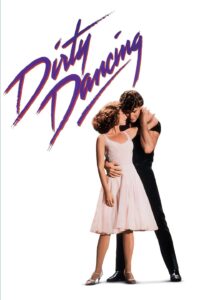 JR: I think this presentation became popular because it’s a simple way to think about how you’re moving your story forward. If X happens, then Y. And if you can’t figure out the Y, then rethink the X. Applying this to TV shows and movies is a great way to get the hang of it. Dirty Dancing is an excellent “So What?” vehicle. Johnny is accused of stealing wallets.
JR: I think this presentation became popular because it’s a simple way to think about how you’re moving your story forward. If X happens, then Y. And if you can’t figure out the Y, then rethink the X. Applying this to TV shows and movies is a great way to get the hang of it. Dirty Dancing is an excellent “So What?” vehicle. Johnny is accused of stealing wallets.
- So What? Baby knows he couldn’t have stolen the wallets because she was with him all night.
- So What? Protecting Johnny will mean that everybody learns what Baby has been hiding, including her parents.
- So What? Their perception of her is going to be shattered.
- So What? Well, lots of things, including that Baby needs that to happen so that she can come into herself as an independent young woman. Also, the dad is going to face his own biases and limitations. Everything that happens in that movie matters and moves the plot forward.
I haven’t entirely pinpointed how to do this with picture book texts because there is variation in the format. It can still generally apply, like with a more narrative structure, but concept books, for instance, might not have a “So What?” I believe I first started “So What?” as an agent with Mike Boldt! When he shares a new idea with me now, he often comes prepared with the “So What?” on hand.
RVC: What’s your best tip for ensuring the “So What?” game stays generative and supportive?
JR: You can certainly “So What?” your manuscript into oblivion. The core of it is understanding how each of your plot points moves the story forward and impacts your characters in a way that matters to the story.
RVC: How often do you participate in other workshops/conferences?
JR: I mostly participate in SCBWI conferences, but I took a break after having my second child four years ago. Then COVID happened. But I’m slowly starting to do more conferences again. I enjoy them. They satisfy the teacher in me.
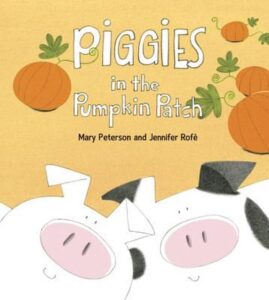 RVC: You’re an author, too. How did Piggies in the Pumpkin Patch come about?
RVC: You’re an author, too. How did Piggies in the Pumpkin Patch come about?
JR: That was a happy accident. Mary Peterson was working on the story and we were doing a lot of back-and-forth, when suddenly I could see what the story needed. I asked her if I could take some extreme liberties with the text, and she said yes. So, I did, and we decided to team up.
RVC: What’s the most useful lesson that came about from that book?
JR: That revising is really hard. We almost quit during revisions. The experience helped me understand what writers go through. I am a more empathetic agent because of that experience.
RVC: In this post-COVID world, I like to ask a health and wellness question in interviews. Here’s yours. What do you do to de-stress?
JR: I build and remodel houses in my mind—I remodel mine almost daily—and look at homes/interior design stuff online. If I weren’t working in publishing, I’d be interested in working in construction.
RVC: One last question for this part of the interview. What forthcoming projects are you especially excited about?
JR: I’ll talk only about picture books that have been announced so I’m not spoiling secrets. The dynamo duo of author Dev Petty and illustrator Mike Boldt have a book publishing this year called Elmore the Christmas Moose. It’s a hilarious story about a moose who applies to be one of Santa’s reindeer, except he can’t fly. They also have a second Life Lessons from Chip the Dog book coming next spring, this one called Don’t Trust Cats.
RVC: OPB did an interview with Dev right here! What else are you stoked about?
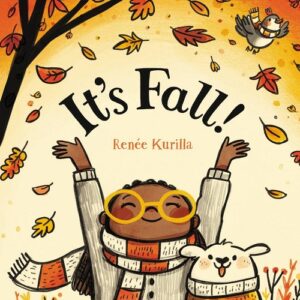 JR: Author-illustrator Sasha Mayer has her first book in a new series coming, called Squash, the Cat. It’s a funny and joyful story about a girl named Maggie and her best friend, Squash, who is her cat. And author-illustrator Renée Kurilla has a book called It’s Fall coming this year. It’s a rhyming story about the delights of fall, and it’s illustrated in a limited fall palette. It’s cozy and wonderful.
JR: Author-illustrator Sasha Mayer has her first book in a new series coming, called Squash, the Cat. It’s a funny and joyful story about a girl named Maggie and her best friend, Squash, who is her cat. And author-illustrator Renée Kurilla has a book called It’s Fall coming this year. It’s a rhyming story about the delights of fall, and it’s illustrated in a limited fall palette. It’s cozy and wonderful.
RVC: Alright, Jen. You’ve been waiting for it. I’ve been waiting for it. The OPB audience has been waiting for it. And it’s now here!! THE SPEED ROUND!!! Lightning-fast questions followed by shockingly short answers, please. Are you ready?
JR: Yes.
RVC: Guiltiest reading pleasure?
JR: I don’t feel guilty about any of it.
RVC: If someone narrated your life, who would you want to be the narrator?
JR: Marin Ireland.
RVC: Which Indigo Girls song would make the best picture book?
JR: My heart bursts that you ask this question because nobody ever has. And I know the answer because I’ve spent time thinking about it. It’s “Power of Two.” The illustrations would depict a parent picking up a child from school, and then they go on a drive to have a picnic and hike around and play in a field of sorts. Or something like this. Sorry this wasn’t a short answer!
RVC: What’s the One That Got Away?
JR: I will never, ever tell.
RVC: When your kidlit career is finally complete, what text should be on the career tombstone?
JR: “So What?” Juuuust kidding.
RVC: Thanks so much, Jen! This was a real treat.
JR: Thank YOU, Ryan!


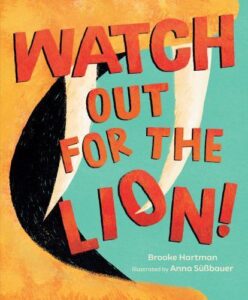
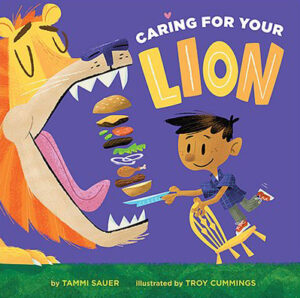
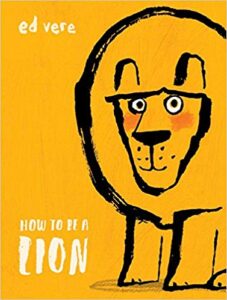
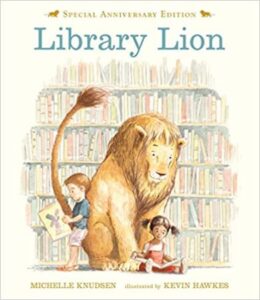
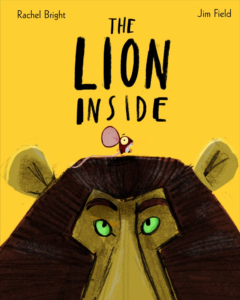
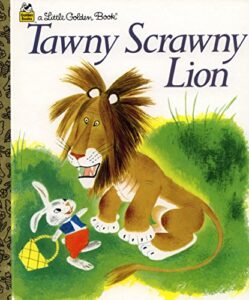
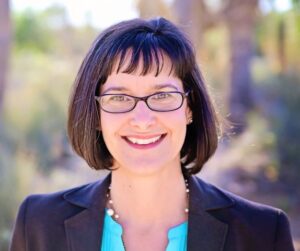 This month’s Author Interview is with Kirsten Larson, a Los Angeles writer who “writes books for curious kids.” Not only has she published a number of fine nonfiction picture books, but she’s also created a middle grade graphic nonfiction book and more than two dozen books for the school and library market.
This month’s Author Interview is with Kirsten Larson, a Los Angeles writer who “writes books for curious kids.” Not only has she published a number of fine nonfiction picture books, but she’s also created a middle grade graphic nonfiction book and more than two dozen books for the school and library market.